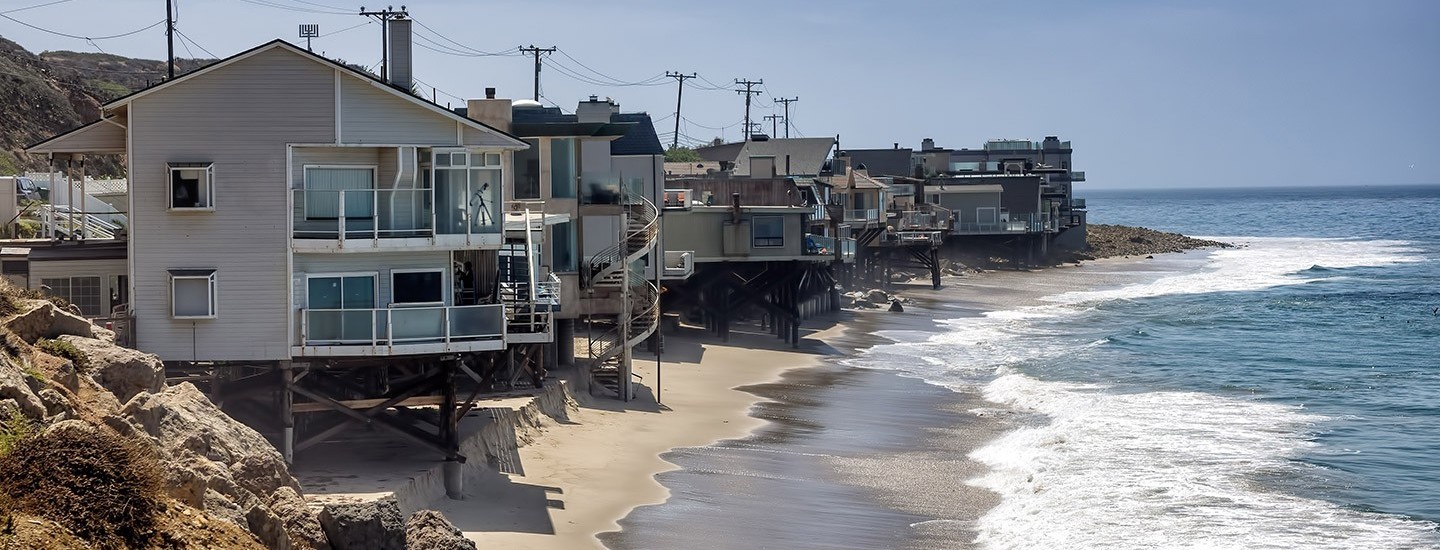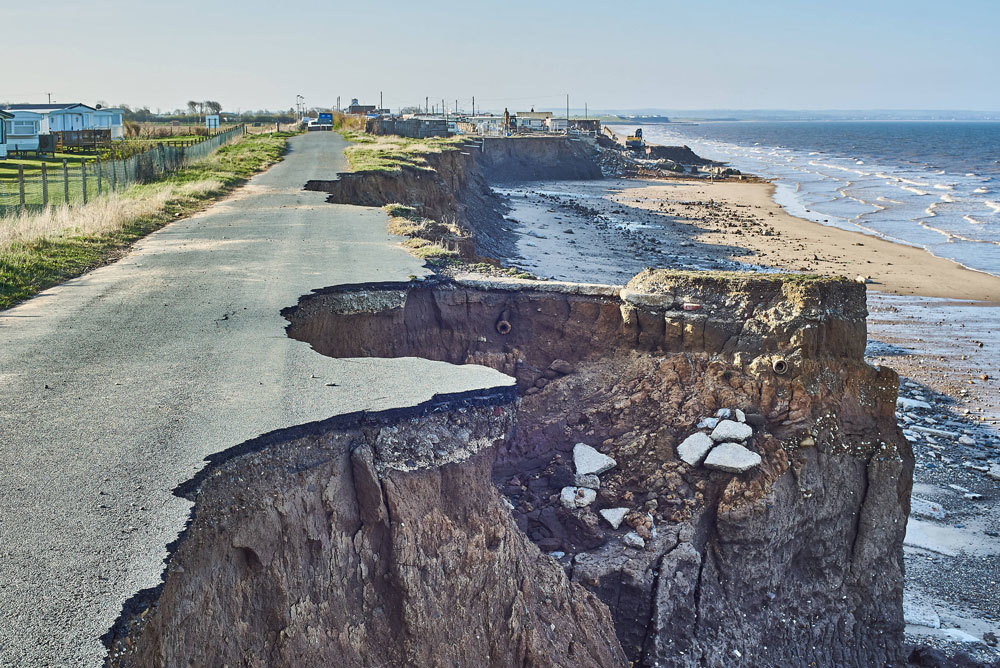
10.13.20
Surfrider Report Finds States Hit Hardest by Extreme Weather and Climate Change are Least Prepared
By Stefanie SekichThe Surfrider Foundation’s 4th annual State of the Beach Report once again found that most coastal and Great Lake states need to improve shoreline management practices and increase efforts to respond to climate change impacts.
The 2020 State of the Beach Report grades 31 U.S. states, and the territory of Puerto Rico, on their policies to protect our nation’s beaches from: coastal erosion, sea level rise, and poorly planned development. The results reveal 74% of coastal states are doing a mediocre to poor job of managing our nation’s shorelines and preparing for future sea level rise. With 23 out of 31 states and territories assessed are performing at adequate to poor levels, most of the lowest grades are located in regions heavily impacted by extreme weather events.
The State of the Beach Report is intended to drive improvements in coastal management by empowering concerned citizens to advocate for stronger shoreline protection policies at the state and local levels. The report is also intended to provide a basis for decision-makers and agencies to form proactive, long-term solutions for increased coastal protection for the future.

Surfrider’s report finds that only eight states are doing a ‘good or better’ job (e.g., earned a grade of A or B based on relevant criteria) of protecting beaches. Most of the states that experience extreme weather events lack solid coastal preservation and sea level rise policies.
Out of 31 states and territories assessed, 23 are doing a ‘barely adequate to poor’ job (with an earned grade of C or less). These states tend to have less stringent policies regarding development in hazardous coastal zones, sediment management, ineffective or nonexistent prohibitions on coastal armoring, and/or little in the way of policies that require the incorporation of sea level rise projections into coastal planning.
The higher scoring states had strong policies regarding coastal building setbacks, prohibitions against coastal armoring and rebuilding in coastal hazard areas, and support for incorporating sea level rise and coastal adaptation into planning documents.

Fortunately, in 2020, eight states improved sea level rise planning efforts. While these new policy improvements are a step in the right direction, it will take a while (years in some states) to draft and actually implement the policies; and therefore, these new policy improvements do not count toward the states grade this year. For example, New Jersey’s Governor signed a new Executive Order that requires climate change impacts be analyzed during development, yet this policy will not be implemented until 2022. In Florida, new legislation requires sea level impacts to be analyzed for ‘publicly funded coastal construction projects’; however, the adoption of this new policy will not happen until 2021.
Louisiana’s Governor announced the state will improve climate resilience over the next four years. While it doesn’t change their grade for this year, this is good news for the future. Michigan produced a thorough Adaptive Management Plan for Lake Erie based on 6 steps: setting goals, planning and prioritizing, implementing, monitoring, evaluating, and adjusting.
North Carolina made the largest improvement with sea level rise planning, changing the state grade from a ‘D’ to a ‘C-.‘ The state is finally implementing a 2018 Executive Order that requires the state to develop, implement, and evaluate programs that support statewide climate mitigation and adaptation practices. In order to maintain its new grade in 2021, the state must fully implement proposed adaptation measures.
Other states made improvements to their already robust sea level rise planning. For example, Maryland passed legislation that authorizes local governments to establish and fund a Resilience Authority under local law. Oregon’s Governor signed an Executive Order that directs the Department of Land Conservation and Development and 14 other state agencies and commissions to identify potential actions within their current authority that reduce greenhouse gas emissions and mitigate climate change impacts.
California continues to lead the charge with planning for climate change. In 2020, the Coastal Commission pushed for increasing setbacks to keep infrastructure safe from future sea level rise and is requiring local communities to look at complicated issues like managed retreat, including examining moving vulnerable train tracks. In 2020, Governor Newsom signed two executive orders to aggressively help the state mitigate and adapt to the climate crisis with an emphasis on using nature based solutions to combat climate change impacts.
Adopting policy recommendations provided in this report will be imperative for all coastal states in the future. A new mapping effort conducted by the First Street Foundation shows that in the future, the U.S. will experience drastically more flooding than previously calculated by the Federal Emergency Management Agency (FEMA). The new calculations analyze sea level rise, rainfall and flooding along creeks not federally mapped. The conclusions are daunting, and estimate that 14.6 million properties are at risk from a ‘100-year flood’, far more than the 8.7 million properties estimated by FEMA. The new mapping effort also uncovered that 70% more buildings in the U.S. are vulnerable to flood risk than previously thought, with most of the flooding impacting low-income neighborhoods.
This study is not unique in identifying impacts to low-income and underserved communities.
Addressing environmental impacts on underserved communities, also known as “environmental justice,” has been brought to the forefront in 2020 and elevated as a priority. Many communities, national leaders, and environmental advocates are raising awareness and providing solutions to help solve this growing problem, and some elected officials are doubling efforts to work on this systemic issue.
2020 has been an exceptionally challenging year. Between the COVID-19 pandemic, civil unrest due to racial tensions, and increased problems associated with climate change, our global community is grappling with existential problems that require immediate solutions. While few solutions are readily available or easily implemented, our collective society must have laser focus on solutions in order to turn the tide of the climate crisis.
During 2020, wildfires, hurricanes, severe rains, oppressive heat waves and weird weather whiplashed across our planet, particularly impacting the U.S. While being at the mercy of forceful events is unnerving, these terrible calamities have also helped people better see and understand the current climate crisis—the connection between ‘extreme events’ and climate change has never been clearer. And these events are only a glimpse of what is to come as our climate continues to drastically change.
As a result of the assessments and recommendations provided by Surfrider’s State of the Beach Report, it is our responsibility to work together to drive awareness of the increasing challenges facing our nation’s coasts. We must improve local, state and federal government policies on erosion response and sea level rise to protect our ocean, waves and beaches for the future.
*Thanks to our Surfrider members and special corporate partners such as Verizon for your donations to help Surfrider publish this report.